Matador Network's Blog, page 1024
August 29, 2019
NZ bans swimming with dolphins
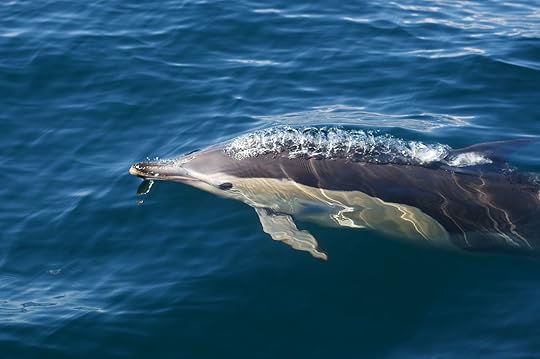
Splashing around with bottlenose dolphins off New Zealand’s North Island may be a dream for travelers, but it’s proven problematic for the species, leading the Oceanic nation to put the kibosh on up-close encounters with bottlenose dolphins in the Bay of Islands.
Tour operators will no longer be able to offer visitors the chance to swim with the marine mammals, nor will they be permitted to have any interactions exceeding 20 minutes. To ensure the dolphins are not inundated, operators will also have to visit all at once, either in the morning or afternoon.
Because they like to hang around the coast, New Zealand’s bottlenose dolphins are particularly susceptible to human interaction, which affects their resting and feeding habits. These behavioral changes have contributed to a 66 percent decrease in the population since 1990, according to the Department of Conservation, which also reported that only 19 bottlenose dolphins regularly visit the Bay of Islands these days.
Prohibiting tourists from swimming with the dolphins is a start, but the DOC is also looking into establishing a marine mammal sanctuary in partnership with local Māori tribes and other research parties. 

More like this: Swimming with dolphins in the Red Sea is a truly magical experience
The post No more swimming with bottlenose dolphins, says New Zealand appeared first on Matador Network.

Amazing cultural treasures destroyed

Soldiers killed in combat. Civilians targeted by airstrikes. Whole communities uprooted and forced to abandon their homes. War has an obvious, and deeply harrowing, human cost.
But it also erodes our culture. Within the past century alone, conflicts have led to the destruction of historic monuments and buildings across much of the world. The Middle East may have borne the brunt of this assault in recent years, but wars in Asia and Europe have also been hugely damaging to our cultural heritage.
Whether blown up, torn down, or bulldozed into the earth, the seven historic treasures detailed here all became casualties of war, never to be seen in their original form again.
1. The historic district of Sana’a — Yemen

Photo: Oleg Znamenskiy/Shutterstock
First inhabited more than 2,500 years ago, the Old City of Sana’a in Yemen is characterized by its beautiful multi-story tower houses built from heavily compacted earth. Narrow and ornately decorated in white gypsum, these eye-catching structures — most of which date from before the 11th century — huddle in thousands behind the neighborhood’s partially preserved city walls.
At its peak, this ancient part of the Yemeni capital was a picture-perfect labyrinth of mosques, homes, and traditional bathhouses. But much of the UNESCO World Heritage-listed site was razed by a Saudi-led airstrike in September 2015; just one incident in the ongoing conflict between the alliance of Sunni Muslim Arab states and the Iranian-aligned Houthi movement that is believed to have cost almost 100,000 lives.
Whole blocks of houses were destroyed in the bombing, leaving piles of rubble and shrapnel-pocked palm trees in their place. With the war in Yemen still raging, it’s too early to tell what the long-term consequences will be for this historic district.
2. Kaiser Wilhelm Memorial Church — Berlin, Germany

Photo: conceptualmotion/Shutterstock
Built at the end of the 19th century in honor of Germany’s first emperor, the neo-Gothic Kaiser Wilhelm Memorial Church is located on Breitscheidplatz, the public square that marks the center of Cold War-era West Berlin.
Today, the church is surrounded by modern shops and offices. That’s no coincidence; it was the only building on the square that wasn’t completely wiped from the map by Allied bombing during the latter days of World War II.
While it fared better than its neighbors, the church was still almost entirely ruined in April 1945. Only the partially collapsed west tower is standing today; Berliners have nicknamed it the “Hollow Tooth,” as it’s literally just an empty husk. A new church, built between 1959 and 1961, includes the ruin of the 19th-century structure, as well as a new tower. Inside the striking, modern octagonal design, a beautiful light filtered through the blue stained glass covering every wall showers worshipers and visitors. The site remains as an anti-war memorial; a poignant testimonial to the power of peace and reconciliation.
3. Two giant Buddhas — Bamiyan, Afghanistan

Photo: Torsten Pursche/Shutterstock
The UNESCO World Heritage site of Bamiyan in Afghanistan was once home to two giant Buddha statues. Carved 1,500 years ago and perched inside a pair of vast domed archways etched out of the imposing sandstone cliffs, the gargantuan monuments — one measuring 181 feet in height and the other 125 feet — were believed to be the world’s tallest standing Buddhas. They were the most striking features of a sprawling Buddhist complex made up of hundreds of caves, monasteries, and shrines, many of which were painstakingly decorated in colorful hues by the resident monks.
All that changed in March 2001, when the Taliban desecrated the site, demolishing the statues in a thunder of artillery fire and explosive charges. Such was the scale of the monolithic carvings that it took weeks for militants to reduce them to two huge piles of fragmented rock.
But while the monuments themselves no longer stand, the colossal niches in which they were perched — one of which is large enough to comfortably fit the Statue of Liberty — are still very much present. On rare occasions, local authorities fire up a powerful $120,000 projector to illuminate the larger niche with a 3D image of how the larger Buddha may have looked in its pomp. Sadly, the power-guzzling projector is impractical for regular usage, as the city of Bamiyan lacks a consistent supply of electricity.
4. Royal Opera House — Valletta, Malta
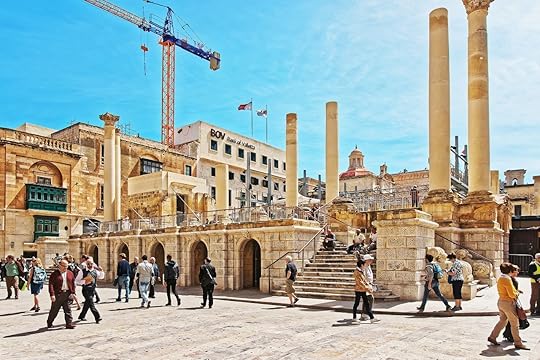
Photo: Roman Babakin/Shutterstock
Designed by English architect Edward Middleton Barry and opened to the public in 1866, the neo-Classical Royal Opera House was one of Valletta’s most beautiful buildings. But it was seemingly cursed with bad fortune.
Just seven years after its inauguration, a fire broke out during rehearsals of Giuseppe Privitera’s opera La Vergine del Castello, causing extensive damage that required four and a half years and an investment of 4,000 British pounds — equivalent to more than $300,000 in today’s money — to repair.
Though substantial, the fire damage paled in comparison to the destruction caused by the Luftwaffe on the evening of April 7, 1942. Stuka dive bombers targeted the Royal Opera House, reducing one of Malta’s most important cultural buildings to ruins and rubble.
Several efforts have been made since the end of World War II to rebuild it, but for various reasons none ever came to fruition, leaving the shell of the building to serve as a moving reminder of the hardships that befell the island during the conflict. Today, and since 2013, the ruins serve as an open-air theater, the Pjazza Teatru Rjal.
5. Temple of Bel — Palmyra, Syria

Photo: Anton_Ivanov/Shutterstock
Often described as the Middle East’s most important temple alongside Baalbek in Lebanon, the Temple of Bel was built between 32 BC and the second century AD. Throughout its long history, it served first as a place of worship for the eponymous Semitic god Bel, before becoming a church and, later, a mosque.
Although ruined, the ancient temple still inspires awe. Blending ancient Near Eastern and Greco-Roman architecture, the rectangular white stone structure is at the heart of a wide, column-flanked precinct looming out of the desert on the outskirts of Palmyra, one of Syria’s oldest cities.
That all changed in late-August 2015 when the UN revealed that much of the site — including the temple’s main building — had been destroyed by the Islamic State in a targeted attack on Syria’s diverse cultural heritage. Little remains of the Temple of Bel today, besides a few outlying columns.
6. Great Mosque of al-Nuri — Mosul, Iraq

Photo: World Monuments Fund
Part of Mosul’s Old City, the Great Mosque of al-Nuri dates back to 1172. Although it was extensively renovated in 1511, one of its original features — the distinctive, leaning minaret nicknamed al-Hadba (or “the Hunchback”) — was still standing eight centuries later.
Although included in the World Monuments Watch in 2010 to attempt to protect the minaret from ongoing conflict, the entire mosque’s future was imperiled in 2014, when Islamic State leader Abu Bakr al-Baghdadi used the site to proclaim the formation of a new caliphate. As Iraqi government forces stormed Mosul in 2017, the jihadist group blew it up in retaliation.
Mosul, one of Iraq’s largest and most culturally important cities, suffered heavily at the hands of the Islamic State. In 2015, the group destroyed around a third of the ancient artifacts housed at Mosul Museum, including a 3,000-year-old lion statue originally from the Temple of Ishtar in Nimrud.
But there are, finally, positive signs for the beleaguered city and its lost heritage. Work has begun on rebuilding the Great Mosque, thanks in part to a $50 million donation from the UAE, and a 3D-printed replica of the lion statue was created as part of Google’s digital arts and culture project. It’s now on display at London’s Imperial War Museum, and can even be viewed online.
7. The Iron Age temple of Ain Dara — Afrin Syria

Photo: Hakan Temucin/Shutterstock
Built around 1300 BC, Ain Dara is a sprawling religious site decorated with a series of enormous footprints hewn into the ancient stone. Three times the size of a human foot, they’re believed by some archaeologists to represent the passage of a god or goddess.
One of Syria’s most extensively excavated heritage sites, Ain Dara is also remarkable for its similarity to Solomon’s Temple, the first Jewish temple in Jerusalem, as described in the biblical Book of Kings.
The early Iron Age complex was extensively damaged in January 2018 by a Turkish airstrike targeting a Kurdish-held enclave south of the modern-day city of Afrin. More than half of the main temple was obliterated in the attack, including many of the intricate stone sculptures of lions and sphinxes that ringed the site. 

More like this: 11 amazing UNESCO World Heritage sites in danger of disappearing forever
The post 7 historic treasures destroyed in wars that travelers will never get to see appeared first on Matador Network.

What it’s like to take a cruise solo

On one particularly rocky night at sea, I walk into the piano bar in a low-cut black dress and sky-high heels, keeping balance like a pro. Everyone stares, and while I’d like to think it’s because of my outfit choice, more likely it’s because I’m missing a fundamental part of my vacation look: a partner. But this is a conscious choice. Nontraditional as it may be, here’s why going on a small cruise ship is the perfect solo getaway.
Solo cruising isn’t all that common.
Traditionally, cruising has been seen as an activity of couples, which is why images of honeymooners and retirees are generally what first come to mind. Unfortunately, most cruise lines make it somewhat unappealing to travel solo by charging a “single supplement” fee if you choose to sail without a plus one. And of course, the idea of being completely alone on a ship filled with couples can turn off even the most sociable traveler. But as it starts to become more apparent to other passengers and crew that you’re there by your lonesome, people really make an effort to make you feel included.
Size does matter.
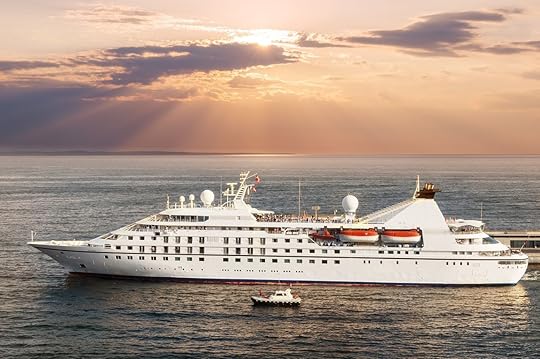
Photo: Elena Elisseeva/Shutterstock
While a “small” ship is considered any cruise with between 650 to 1,300 passengers, I’ve lived in apartment buildings with higher headcounts. By the first night of my vacation, I’m already starting to recognize faces left and right. And since it’s rare to find anyone younger than the legal drinking age on board, it starts to feel like a tight-knit community of like-minded travelers almost instantaneously.
No matter where you come from, how old you are, or what you do for a living, it doesn’t really matter when you’re on a cruise ship. Somehow you all chose to set sail on the same itinerary, on the same cruise line, and on the same date. You have a lot more in common with these strangers than it would appear. Well, except for how many people are pitching in for that bill.
The perks will make you forget that price tag.

Photo: FloridaStock/Shutterstock
Once you’ve hit the high seas by yourself, it’s really hard to go back to sharing a cabin with someone. Like, really hard.
For starters, I get the best sleep of my life while at sea. Between having a giant, comfy bed all to myself, curtains that block out every shimmer of sunlight, and the gentle rocking of the ocean… the slumber is absolutely unreal. I can sleep in all morning if I want — something I’m rarely able to do at home.
When hunger hits, I can be as picky — and peculiar — as I want, grabbing a few of the best bites from multiple cafes and buffets. There’s no one to judge my eclectic selections. Indian curry with a side of cantaloupe and a Southern-style biscuit? Sure! Why not? And once I’ve crafted the perfect plate, I can shamelessly bring it back to my room to enjoy on my balcony, where the scenery never disappoints.
At the pool, finding a single lounge chair is never a problem, and I finally have time to tackle those old magazines that have been stacking up at home. For every issue I read cover-to-cover, I reward myself with a cone piled high with soft-serve ice cream. “Treat yourself” becomes a quite literal mantra.
From the casino to the main dining room, the bartenders all get to know me because of my oddly specific drink order: vodka soda, two limes, two cherries. By the second day, I don’t even need to ask. They start pouring before I’ve even opened my mouth. It’s efficient. It’s effortless.
“Wellness” is not something you need to pay extra for.

Photo: Maridav/Shutterstock
Wellness on a cruise ship doesn’t mean smoothies and spin classes. It’s all about doing whatever you want, when you want to, and detoxing from the stresses of daily life. At least a few times throughout the voyage, I like to wake up while it’s still dark out and make my way to the lido deck to watch the sunrise. While the promise of the perfect Instagram shot is what gets me out of bed, the ever-changing colors are what keep me glued to the handrail. The swirling oranges, pinks, and purples of the clouds remind me that sometimes I just need to slow down and appreciate the journey. It sounds corny, but it’s true.
Since there’s no one to coordinate — or worse, compromise — with, the rest of the day is completely on my schedule. In fact, for someone who is an admitted hyper-planner back on land, this is the biggest stress-reliever. I don’t even need to take advantage of the onboard spa specials, because late-night trips to the outdoor hot tubs in my fluffy white bathrobe are equally as therapeutic, if not even more so.
Hell, it’s not even that important to have a balcony. I get just as excited about an inside cabin as I do about a room with a view. Sure, I may not have my own personal breakfast nook, but my cabin becomes my hideaway — my cave. A place where no one can find me, except for my room attendant, who indulges me with towel animal “roommates” on the daily.
I learned a long time ago not to even bother packing my workout clothes. While the thought of a fully equipped gym that’s rarely occupied sounds like a dream, it simply isn’t reality. Instead, I like to take the stairs everywhere they go. It’s an easy way to burn off a few extra calories, but more importantly, it gives me the opportunity to explore a few new corners of the ship I might not have seen otherwise.
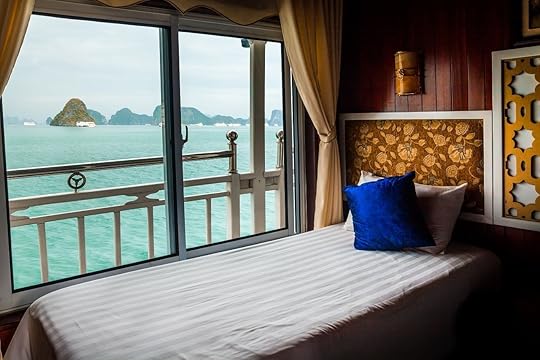
Photo: Anton Petrus/Shutterstock
In the afternoons, I like joining in on a few rounds of trivia. I nearly always end up surprising myself as often as I do my newfound teammates with my wealth of useless knowledge and pop culture trivia. By the end of the game, I’ve made a few friends who spend the rest of the trip referring to me by standout answer instead of my actual name. It’s an offbeat type of camaraderie you don’t find in many places, and it’s spot-on given the circumstances. After all, it’s hard to remember so many names in such a short time. So on a cruise, nicknames become the norm.
Being at sea not only means disconnecting from reality, but disconnecting from cellular service, too. Everyone on board is collectively forced to face awkward situations head-on, without the crutch of a smartphone to mindlessly scroll through apps on. Without the distraction of phones that are constantly pinging, conversations feel more deliberate and meaningful. It’s humbling and old school, but more importantly, a completely welcomed break from technology.
You will get over that awkward hump.

Photo: Maridav/Shutterstock
Of course, going to bars by myself at night was a little intimidating at first, but I quickly discovered that flying solo is the ultimate conversation starter. Your ship is essentially a tiny, isolated floating village. And in true neighborly fashion, others are curious to hear your story. To get to know the people on their very same vacation. “Where’s the rest of your party?” is the most common question I get, followed by looks of surprise when I smile and casually explain that I chose to set sail solo. Chances are — after days of compromising with their significant other on their agenda — they’re probably jealous. 

More like this: 22 solo female travelers give their top travel tips
The post Why a small cruise ship is the perfect solo getaway appeared first on Matador Network.

Lake Tahoe microplastic pollution
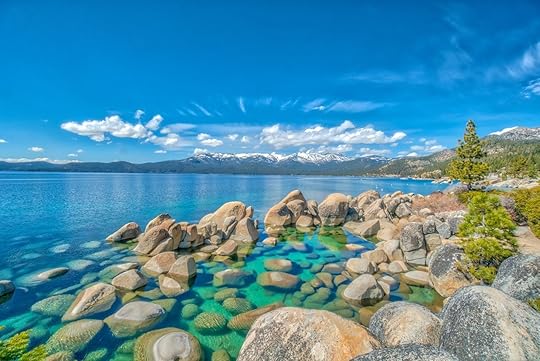
It’s not just Californians and Nevadans who worship Lake Tahoe, the famous freshwater lake that straddles the border between their states. Snow or shine, visitors from all over flock to the shores of its clear blue waters, which are a little less fresh than they once were.
For the first time ever, microplastic particles were discovered in water samples taken from Lake Tahoe by the Desert Research Institute in Reno, Nevada. Since microplastics have been found to travel long distances via wind, rain, and snow, researchers are unsure where the plastics and synthetic fibers found in the samples originated, whether from one or more local, national, or global sources. The institute is currently conducting an investigation into the pollution and slated to share its findings with the American Geophysical Union this December.
Unfortunately, microplastics have been found in more and more remote locations recently, from the top of the Pyrenees to the Rocky Mountains, though less is known about their presence in alpine lakes like Tahoe, much of whose water comes from snowmelt. To find traces of plastic pollution in this or any other freshwater lake is an upset but, sadly, perhaps not a surprise. 

More like this: 6 steps you can take today to become a zero waste travelerc
The post Microplastic pollution discovered in Lake Tahoe for the first time appeared first on Matador Network.

The best LGBTQ+ podcasts

If you aren’t on the podcast train yet, it might be time for you to get on. Now, more than ever, queer programs are having a moment. No matter where you fall in the rainbow, the podcast world has you covered. From the hilarious to the heartwarming, LGBTQ series deliver a full range of queer emotions right to your feels — and your earbuds. Whether you’re trekking through the backroads of the US or are traversing through a brand-new country, these are the podcasts that you’ll want to bring along with you on your journey.
1. Dyking Out

Photo: Dyking Out/Facebook
New York City-based comedians Carolyn Bergier and Sarah York discuss news and pop culture as it relates to queer life in Dyking Out — with a few bits of comedic ambience thrown into the mix. Each week, the pair interviews a queer celebrity to get their unique take on all things pop culture — through a queer lens, of course.
2. Queery
If you’re more interested in tuning into a more serious conversation surrounding queer culture, Queery can be the perfect way for you to catch up on the news (as it relates to queer people, at least) on the way to work in the morning. Each week, the host, comedian Cameron Esposito, asks her notable guests (including Roxanne Gay and Ian Alexander) to explore their individual stories of identity and personality and how they relate that to the mainstream news and culture.
3. Inside the Closet

Photo: Inside The Closet Podcast/Facebook
Even if you’ve already come out, this podcast, hosted by New York City comedians Emma Willmann and Matteo Lane, is worth venturing back inside of the closet for. If what you’re seeking in a queer podcast is a thoughtful discussion of a range of topics relating to LGBTQ life, then Inside the Closet will serve this to you on a bedazzled platter. From queer dating advice to open discussions about sex, this podcast has it all.
4. Making Gay History
Looking to learn more about the history of the queer movement in the US and beyond? Look no further than Making Gay History, a podcast centered around interviews that the show’s host, Eric Marcus, had with leaders of the Gay Rights Movement in the 1980s. Whether you’re hearing about the New York City trans community from its original outspoken leaders or dissecting the importance of the Stonewall Riots from those who were there, Making Gay History is an unforgettable trip down LGBTQ lane.
5. Homoground

Photo: Homoground – Queer Music Podcast/Facebook
Created to bring awareness to LGBTQ bands and musicians, Homoground is a queer audio podcast hosted by Lynn Casper. Through its existence, the LGBTQ music scene has become a cohesive and palpable element of the mainstream culture. Queer music lovers — this one is for you.
6. UnErased: The History of Conversion Therapy in America
Created by Joel Edgerton, the director of 2018’s Boy Erased, UnErased is a podcast that uses the film as its inspiration — featuring the stories of those who have undergone conversion therapy. Despite the fact that the podcast covers a topic that can be, at times, deeply disturbing and heavy, it manages to infuse hope into every episode of vulnerable and emotional storytelling.
7. Dead for Filth

Photo: Dead For Filth/Facebook
Did you know that the horror genre is incredibly queer? Yeah, we thought so. From screenwriter Michael Varrati comes this thoughtful and chilling podcast about the queerness of the horror genre. Throughout the course of each season, Dead for Filth explores the creative genius of queer horror icons who truly bring the genre to life.
8. One From the Vaults
Specifically made to cover all aspects of trans culture and history, One From the Vaults, hosted by Morgan M. Page, a trans activist and writer, has become a vital resource for the LGBTQ community. Whether you crave more coverage on trans icons or are just looking to gain a deeper understanding of trans culture, One From the Vaults is a must-listen for everyone.
9. Nancy

Photo: Nancy Podcast/Facebook
Contrary to popular belief, not all queer people in the limelight are completely comfortable with their queerness. Case in point: the podcast Nancy, where hosts Tobin Low and Kathy Tu attempt to get more comfortable with their queerness as they explore every topic and how it relates to the LGBTQ community. At the end of the day, their goal is to find out what is so special about being queer — and the answer(s) may surprise you. Don’t forget to bring a box of tissues.
10. The Ten
According to The Advocate, The Ten is “like The Daily, but gayer.” Each week, The Advocate’s Editor-in-Chief, Zach Stafford, examines each news story from a queer perspective, creating a truly engaging and informative experience for each listener. One of the more recent episodes, for example, was an honest examination of presidential candidate Pete Buttigieg, and whether America is truly ready for a gay president.
11. Your Queer Story

Photo: Your Queer Story/Facebook
If you can’t decide what kind of queer podcast you’re in the mood for, put on Your Queer Story — a truly eclectic mix of history, culture, events, politics, and religion as it relates to the LGBTQ community. The show is hosted by Paul Hobbs and Evan Jones — best friends who take you on their journey of self-love and acceptance. Throughout the course of each episode, you’ll learn about every single tangent of queer life — even the parts that make you a bit uncomfortable. In their eyes, every queer story is important.
12. Food 4 Thot
What happens when four multiracial queer people get together to make a podcast? You get in-depth and eye-opening conversations about race, sexuality, identity, sex, relationships, and books. Not only that, but Food 4 Thot is a controversial, heartwarming, and compelling conversation that seems to happen between four best friends who can laugh and cry together. At the end of each episode, you’ll feel as though you just had a venting session with your best friends — pals who have quite a bit of wisdom.
13. Throwing Shade

Photo: Throwing Shade/Facebook
Calling all feminists and queer people (or even just those who are curious about the ideas and cultures that exist behind these groups): Throwing Shade is a worthy investment of your time. Hosted by Erin Gibson and Bryan Safi, the podcast discusses women’s issues, gay rights, pop culture, and politics. Each episode seeks to address the main issues affecting women and the LGBTQ community.
14. Busy Being Black
Even queer culture has worked hard to remain inclusive. Busy Being Black, hosted by Josh Rivers, explores what it really means to be African-American and queer through intelligent and thought-provoking conversations with queer people of color. The podcast seeks to answer one question: How can we live in the fullness of our queer black lives?
15. A Gay and a NonGay

Photo: A Gay and A Nongay/Facebook
Perhaps taking a detour from the other LGBTQ podcasts on this list, A Gay and a NonGay — just like it sounds — is a podcast that offers a look at how heterosexual and queer friends talk about life. Hailing from the United Kingdom, A Gay and a NonGay has steadily become the area’s most popular LGBTQ podcast, perhaps because of it’s hilarious and honest conversations about the differences (and similarities, of course) between queer and straight life. Each episode, James Barr and Dan Hudson learn about the things that make them different and laugh endlessly about the hilarious things that bring them together.
16. Qmmunity
If you want to better understand what it means to be queer, give Qmmunity a listen. Hosted by Alexis Caught and Christania McPherson, the podcast attempts to give listeners a thorough understanding of what it means to be LGBTQ today, tomorrow, and yesterday. After all, to better predict the future of queerness, you need to explore the history of the movement — and this is just what the British podcast does. 

More like this: 10 of the best honeymoon destinations for gay newlyweds
The post 16 inspiring LGBTQ+ podcasts to listen to on your travels appeared first on Matador Network.

August 28, 2019
The best oyster regions in the US
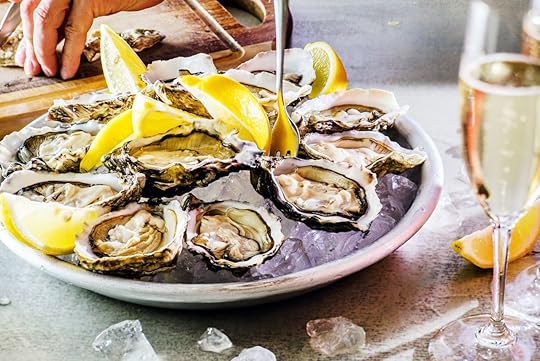
Oysters look like something that should stay firmly planted in the ocean — even more so once the shell comes off. It’s fair to say that the oyster is, at the very least, visually unappetizing.
Then the oyster touches your tongue. Depending on where it’s from, you might taste the clean water of a distant inlet or the brash waves of the salty ocean. Maybe you taste the brininess of seawood and the ocean floor or something more metallic and minerally, like rocks washed clean by ferocious currents. Sometimes the taste is sweeter and more acidic, like the green rind of an unripe melon or the crisp snap of a fresh cucumber. The layered, fresh, and complex flavors are why oysters, despite their appearance, are considered a delicacy.
Oysters taste different depending on where they’re sourced from. In the US, oysters grow in blooms of millions at a time on the coasts of Washington, California, Alabama, Maine, and others. The diversity found in US waters gives other famous oyster countries, like France, a run for its money.
“American oysters have a different brininess to them than French oysters that is lighter, and cup sizes can vary,” explains Josh Sauer, executive chef at the Long Branch, New Jersey, French restaurant Avenue. “French oysters are milkier with a metallic flavor, are flatter, and have a little cup.”
Though oysters can be eaten grilled or fried, they’re typically served on the halfshell with three tried-and-true sides: cocktail sauce, vinegar and shallot-based mignonette sauce, and fresh lemon wedges. These light, fresh dressings don’t overwhelm the natural flavors of the oysters (unless you have a heavy hand with the cocktail sauce). If you want to experience the full range of natural flavors, eat them plain and raw by wriggling the meat loose, tilting your head back, and slurping. The oyster is meant to be swallowed in one bite, but if you really want to savor the brine, give it a few chews first.
You may have heard it’s only safe to eat oysters in months with the letter “r” in the name. It’s a complete myth. Oysters farmed in clean water and harvested hygienically are safe to eat all year around. The old adage stems from believing that one should avoid eating oysters in the summer when they can spoil faster. Wild oysters also spawn in the summer, leaving the meat thin and soggy. However, most oysters raised in aquaculture don’t spawn. Some oysters taste better in certain months, however, so do they have a prime season.
The best places to find oysters are, unsurprisingly, on the coasts. These are the essential oyster-bearing regions in America, plus the best oysters to eat in each one.
Northeast and East Coast
Cape Cod, Massachusetts

Photo: NadyaRa/Shutterstock
On Cape Cod, Massachusetts, you’ll find an abundance of must-try oysters varieties, most notably WiAnno, Duxbury, and Wellfleet. Prime oyster season here tends to run from October to March.
Wellfleet oysters are salty with a clean finish, balanced by a touch of sweetness. Eat them plain or with a light spritz of lemon juice to cut down on the brininess. The meat of a Duxbery oyster is fatty and buttery, while WiAnno oysters are briny and sweet.
Cape Cod is home to many hidden oyster gems. Worth mentioning are farmed varieties like the creamy Cotuit, which tastes distinctly of the ocean, and the Barnstable, similarly briny with a sweet, seaweed-like finish.
Narragansett Bay, Rhode Island
There are pockets of Rhode Island where oysters grow in abundance. In Point Judith Pond, just south of Narragansett Bay, you’ll find Moonstone oysters (available between September and July), which have gleaming, marble-white shells and taste intensely salty with a “brothy umami richness,” according to one account.
Many other oysters call Narragansett Bay home, like Beaver Tail and Wild Goose oysters. The most notable variety are the Quonset Point (available all year), which have an orange-hued shell. Phytoplankton in the bay give the oysters this citrus color and fattens up the meat. The flavor is clean and light, but one warning: The shells are brittle and difficult to shuck.
Another praise-worthy Rhode Island oyster is the Ninigret, found in Ninigret Pond near Charlestown. Ninigret oysters are briny with a distinctive sweet aftertaste.
Long Island, New York

Photo: Romiana Lee/Shutterstock
The mild flavor of Blue Point oysters make them the perfect beginner oyster, and they tend to pair well with the stronger, spicier flavors of cocktail sauce. A genuine Blue Point oyster also has a briny aftertaste. Blue Points are best enjoyed from September to July.
By 1800, the Blue Point was so popular that seafood dealers pirated the name, applying it to any oyster found near Long Island. New York tried to ban improper use of the name, but the law never really stuck. These days, Blue Island Oysters farms genuine Blue Points from the Long Island Sound.
Damariscotta River, Maine
Maine oysters are famously abundant, and there are too many variations in the state to list here. The standout varieties come from the Damariscotta river.
Glidden Point oysters are sometimes called the “gold standard” of Maine oysters. They have a rich, briny flavor and tender meat that’s best enjoyed with a spritz of lemon juice or a sprinkle of black pepper. The crisp, clean waters of the Damariscotta wash the oysters clear of any sand or silt. Mature oysters are harvested by hand by Glidden Point Oyster Farms.
Belon and Pemaquid oysters can be found in the Damariscotta, as well. Belon oysters originated from the Belon River in France, but in the 1950s, farmers began cultivating them in Maine. They have a metallic, nutty flavor, sometimes compared to a penny. Pemaquid oysters, on the other hand, are crisp and salty. Skip the cocktail sauce and dot these oysters with hot sauce and a squeeze of fresh lemon juice.
Belon oysters are technically in season from September to June, but quantities are limited once the river freezes. Pemaquids taste best from March to December.
Chesapeake Bay, Virginia and Maryland
Inland from the Atlantic Ocean and running through Virginia and Maryland, Chesapeake Bay is so hospitable to oysters that it once seemed as though there were as many oysters there as stars in the sky. However, aggressive over-harvesting has lead to serious depletion of many oyster stocks in the bay, and the majority of high-quality oysters you’ll find in the area are farmed.
Here, you’ll find exceptionally sweet oysters like the tender Rappahannock, the more balanced Stingray, and tongue-puckeringly briny Olde Salt, grown by Rappahannock Oyster Co. Whitecap oysters are grown in cages where the Potomac merges with Chesapeake Bay and have a sweeter, creamier flavor. The best time for Chesapeake Bay oysters is from September to July.
Virginia has a vibrant oyster culture that extends far beyond Chesapeake Bay to the state’s eastern shore and Atlantic coast.
Washington

Photo: Andriy Blokhin/Shutterstock
Willapa and Samish Bays
Shigoku oysters, a variety of Pacific oysters, thrive in the waters of the coast of northern Washington. In Japanese, shigoku means “ultimate,” an apt name for this well-balanced oyster. The meat is briny and firm with just a touch of light sweetness and a flavor often favorably compared to cucumber. Taylor Shellfish Farms introduced the Shigoku to Washington in 2009, and they can be ordered all year around.
Shigoku oysters are suspension grown, a farming method in which the oysters are raised in bags suspended in the water that move with the currents. The result is an extra clean flavor, and because the bags follow the natural movement of the water when the tide goes in and out, the oysters move too. This movement allows the oyster meat to firm up and the shells to “chip,” a process that helps them grow deeper instead of wider.
Totten Inlet in the Puget Sound
Olympia oysters, also called Oly oysters, are the only oyster species native to Puget Sound waters. Found mostly in Totten Inlet in the Puget Sound, Olympias are also farmed in the nearby Eld Inlet (where the meat of the beach-grown oysters is buttery and tastes like watermelon rind to some) by Olympia-based Chelsea Farms.
Though Olys are delicate in size (they rarely grow larger than a 50-cent coin), this oyster is a survivor. Pollution and overharvesting drove them to extinction in nearly every other part of Puget Sound, but they live on. Their flavor is bold and intense, perhaps best described as earthy, with a lingering, smoky aftertaste. Olys are highly briny, so be prepared to taste ocean.
Another popular variety from Totten Inlet is the Kumamoto oyster, which is originally from Japan. This oyster gained a following for its sweet taste, reminiscent of fresh honeydew melon, and a mild brininess. Oyster-eating amateurs will love Kumamotos alongside a splash of lemon juice or vinegary mignonette sauce.
“Nothing beats a Kumamoto,” Sauer says, “which has a deep cup, mild brine, and a creamy texture.”
At nearby Hammersley Inlet, oysters are plump with a clean, light cucumber flavor that pairs well with the typical accoutrements of an oyster side dish: fresh lemons and cocktail sauce.
Hood Canal
Oysters are so plentiful in Hood Canal that you can pick them up by the handful on the beaches. A friend with a cabin on Hood Canal tells me that “oysters out number rocks” in the area. Among the varieties that grow here are the super briny Summerstone and the smooth-shelled, crisp Blue Pool oyster, both grown and sold by the Hama Hama Company.
Hama Hama oysters are one of Hood Canal’s most celebrated varieties and have a cucumber aftertaste and a pleasant saltiness. They’re beach grown and accustomed to moving with the tides and shifting currents. The Hamma Hamma River (yes, it’s spelled differently than the oyster) provides millions of these oysters at a time, also harvested by Hama Hama Company. Though (like most other oysters) Hama Hamas are available all year around, they are sweeter in the spring and have a brinier finish in the fall and winter.
California

Photo: Jessica Ruscello/Shutterstock
Tomales Bay
There are surprisingly few places to grow oysters in California. The state simply doesn’t have enough bays where oysters can thrive (San Francisco Bay grew millions of oysters in the mid-1800s, but it’s now far too polluted).
Yet tucked away in Marin County is an anomaly: Tomales Bay, home to Hog Island Oyster Co. Here, you’ll find the Hog Island Sweetwater, the bay’s signature oyster that’s farmed year-round. As the name suggests, these oysters are sweet with a smoky, metallic finish and mild brininess. At Hog Island (where you can plan a “shuck your own oyster picnic” at the nearby beach) you’ll also find French Hog oysters, which have a strong seaweed flavor, and Kumamotos like those from Totten Inlet.
Morro Bay
In the cold, salty waters of Morro Bay, Pacific Gold oysters prosper. These fresh, bright oysters have a flavor that’s often compared to lemongrass or the green rind of a melon. Pacific Gold are the same variety as Hama Hama oysters, but the waters in Morro Bay make for a sweeter, saltier oyster once its mature. Though they can be eaten raw, Morro Bay Oyster Co., where they’re farmed, recommends grilling Pacific Gold oysters.
Another farmed oyster you’ll find in Morro Bay is the Grassy Bar, said to taste like fresh watermelon and sea water.
Gulf Coast and the Atlantic

Photo: Suzanne C. Grim/Shutterstock
Caminda Bay, Louisiana
Oysters found in this part of Louisiana are bigger than those found anywhere else in America. Caminda Bay is home to a wealth of oysters — not just the Caminda Bay but the Triple N and the Beauregard Island. They’re grown in floating cages, where they’re safe from predators and can tumble along with the tides and currents. The result is a meaty, rich oyster that stands out for its bold saltiness. The meat stays plump and juicy throughout the summer because the oysters don’t spawn.
This region is still considered up-and-coming compared to some of the long-standing oyster regions on this list. Its oysters hit mainstream markets in 2015.
Alabama Gulf
Salty and rich, Alabama oysters are among the most beloved in the country. In fact, the state was once the number one oyster producer in America. Like Louisiana oysters, Alabama oysters are triploids, so a farmed oyster like Isle Dauphin stays fat throughout the year. The deliciously buttery and salty Murder Point are another Alabama favorite.
However, oyster stocks have hit historic lows in Alabama in recent years. In 2018, the state halted the public sale of its oysters, citing a dire shortage. The ban has been lifted in some areas of the state while it works to restore the once thriving oyster population.
Capers Island, South Carolina
Off the coast of Charleston, near Capers Island, a succulent and powerfully briny oyster called the Capers Blade grows in clusters. Clammer Dave, aka Dave Belanger, harvests them by hand, and they’re on the menu at one of Charleston’s most prestigious restaurants, Husk.
Meanwhile, in Beaufort County, South Carolina, Lady Island Oysters farms another favorite: the Single Lady oyster, which is known for its crisp, briny flavor and sweet finish.
Galveston Bay, Texas
The heart of the Texas oyster harvest takes place in Galveston Bay. Pepper Grove and Ladies Pass are two notable varieties of Texas oysters. The meat is chewy and sweet but with an umami aftertaste and brininess that will remind you of a mouth full of ocean water. Galveston’s oyster industry took a big hit following Hurricane Harvey, but in 2018, plans to build a protected reef just for oysters in the bay were announced. 

More like this: Where to eat in Maine before lobster season ends in December
The post Your guide to the 14 best oyster regions in the US appeared first on Matador Network.

Cities to visit for fall outdoors

Fall is about a lot more than foliage and football. The weather isn’t quite drop-dead freezing in the more seasonal parts of the country, and since kids are in school and tourism has slowed, it’s prime time to enjoy the outdoors. To figure out which places, exactly, are best for enjoying the brisk fall weather, the bus-and-train travel mavens at Wanderu took a look at stuff like bike rentals, urban hikes, fall temperatures, and an aggregate parks score. And though the results aren’t necessarily shocking, they will give you some inspiration for stuff to do both home and away this fall.
25. Columbus, Ohio

Photo: f11photo/Shutterstock
The biggest city in Ohio is often overlooked for any of its outdoor attractions, mostly because the majority of Americans think the only outdoor event here involves the Buckeyes. But beyond OSU football, Columbus has a wonderful collection of city parks, where stuff like the outdoor play area at Blendon Woods and an obstacle course at Glacier Ridge rated it a Wanderu parks score of 47.5. Though its fall temps dip into the 50s, Columbus still has ideal weather for fishing at Delaware State Park or the Hoover Reservoir. Or you can head to Battelle Darby Creek and check out bison in the fields before learning all about them in the indoor nature center.
24. Omaha, Nebraska

Photo: Paul Brady Photography/Shutterstock
Never sleep on Omaha, the largest city in Nebraska and the perfect jumping off point for fall fun in the Cornhusker State. The secret is out amongst hunters, who come here en masse every October for the best pheasant hunting in the Midwest. It’s also peak season for those who like to see birds and not shoot them, as the fall offers ample birding opportunities along the Missouri River. The city’s Paths of Discovery trail system is a must-hit too, running 85 miles and allows you to discover every corner of the city by bicycle.
23. Los Angeles, California
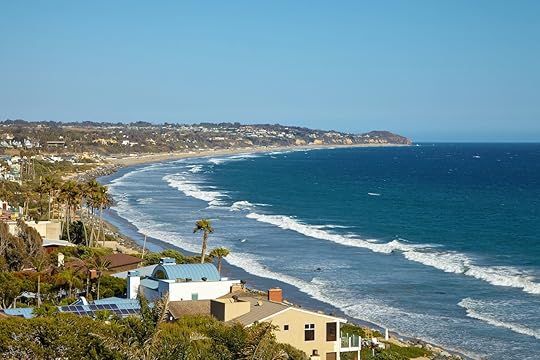
Photo: dualpics/Shutterstock
Nobody’s going to dispute that Southern California has an ideal climate and topography for outdoor adventure. You just sometimes forget when you’re sitting in 18 lanes of unmoving traffic on the 405. But LA is a place where people catch up with friends over hikes through Topanga Canyon or have dates running between piers in Venice Beach and Santa Monica. But the city is also full of natural hidden gems, like the Point Dume State Beach Preserve in Malibu or the woody Kenneth Hahn State Recreation Area. With less than an inch of precipitation and temps in the mid-60s, fall in LA is, if nothing else, guaranteed not to rain you out.
22. Tampa, Florida

Photo: Sean Pavone/Shutterstock
Tampa often gets lost behind the talking puppets in Orlando and the bright lights of South Beach. But for outdoors, Tampa might be the Sunshine State’s best city, with three solid urban hikes, as well as the Downtown Tampa Riverwalk, a three-mile path by the Hillsborough River lined with bars and museums. Though Clearwater and St. Pete are the big beach destinations in Tampa Bay, you can find some nice secluded spots here too — like Cypress Point Park, which affords unfettered views across the bay and airplanes overhead. If you’re up for a drive, Fort De Soto Park isn’t far away, a stretch of white sand that’ll make you feel like you landed on a deserted Caribbean island.
21. Las Vegas, Nevada
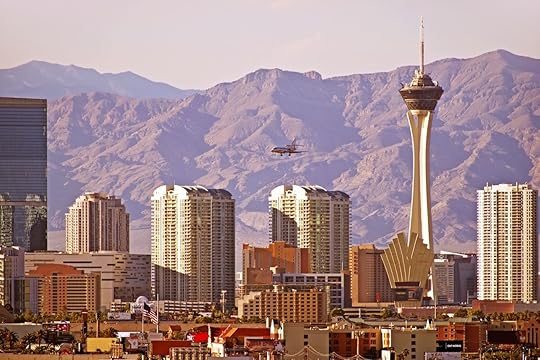
Photo: welcomia/Shutterstock
Interesting that a city literally engineered to keep you from ever going outside offers two urban hikes and has a parks score of 57. It seems the influx of long-term residents have discovered life outside the casinos, and if you’re willing to drive a little bit, you can join them in some of the coolest outdoors in the country. An hour out of town sits the Valley of Fire, quintessential desert hiking at its finest. You can also take a kayak out on the Colorado River, or bike around a little closer to town on the mountain trails at Red Rock Canyon. You can even ski in Vegas if the time is right, with the Las Vegas Ski and Snowboard Resort at Mount Charleston offering a fun and easy afternoon on the slopes.
20. New York, New York

Photo: Sean Pavone/Shutterstock
The city that never sleeps proves you can pave over nearly every square inch of a city, fill it with more humanity than God ever intended, and still have pretty great outdoor activities. Central Park is the marquee name here, but those outside this city might not know about Governor’s Island, which now boasts an adventure zone with a zip-line. We wouldn’t advise channeling your inner Kramer and swimming in the Hudson River, but there are plenty of places that’ll rent you kayaks to paddle through it. For something a little more peaceful, check out the botanical gardens in Manhattan, Queens, and Brooklyn, all of which provide a peaceful respite when the summer crowds subside.
19. Philadelphia, Pennsylvania

Photo: Sean Pavone/Shutterstock
Another densely populated urban metropolis you wouldn’t expect to rank this highly is Philadelphia, which checks in with a surprising parks score of 66.67. But you may recall that Pennsylvania translates to “Penn’s Woods,” and you can get out into said woods along the Schuylkill River trail, a 30-mile paved path from the city to Parkerford. You can also escape into the trees at Fairmount and Wissahickon Valley Parks, or learn something while you’re outside at Valley Forge Historic Park. For something completely different, take a walk through Ringing Rocks County Park, where 10-foot rock mounds ring out loud when stuck with a hammer.
18. Atlanta, Georgia

Photo: Sean Pavone/Shutterstock
North Georgia is one of the most underrated scenic wonderlands in America, and nearly all of it is accessible just a short drive from Atlanta. Trek the Appalachian Trail — or at least a little slice of it — as the trail’s final (or first) 78.6 miles are in this region. In town, you can explore the city by bike or foot along the Atlanta Beltline, an old rail corridor around the city connecting it all through the great outdoors. If weather permits, you can also take part in the time-honored tradition of “shooting the hooch,” where you float down the Chattahoochee River, beers in hand, enjoying the shade of the trees along the banks.
17. Chicago, Illinois
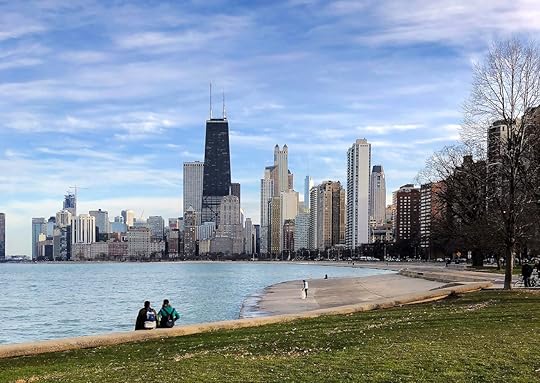
Photo: Chris Freda/Shutterstock
Though stuff like “elevation” and “deep forest” might not be easy to find in Chicago, you can still run through this city better than most in America. The Lakefront Trail gets all the pub here, a famous 18-mile jaunt along the shores of Lake Michigan. Go a little south of the city and you’ll find yourself in Palos Forest Preserve, with demanding rolling hills in the heart of preserved wetlands and remote ravines. Or challenge yourself a little more along the 10 miles of crushed asphalt at Waterfall Glen, which takes you up and down hills past majestic waterfalls that’ll make you forget you’re within spitting distance of Willis Tower.
16. Milwaukee, Wisconsin

Photo: f11photo/Shutterstock
People who breeze through town sometimes like to say semi-condescending things about Milwaukee like, “Oh it’s great, like a smaller Chicago.” But it’s actually nothing at all like the Windy City aside from its lakeside locale, and spending a weekend taking in the city from the waters of Lake Michigan will have you realizing how much nicer the nature is in a smaller city. If you’re not up for sailing the lake, grab a kayak and paddle the Milwaukee River, stopping at the breweries that dot the shore. For something on land, take a stroll through the Schlitz Audubon Center, a 185-acre preserve with six miles of trails and a watch tower boasting perfect views of the lake.
15. Baltimore, Maryland

Photo: Jon Bilous/Shutterstock
Theoretically, a city with average temps in the low 60s, over three inches of rain, and a park score of 43 wouldn’t figure to land this highly on the list. But B-more scores big with its absolute abundance of bike rentals, 32 citywide. You can use them to do a loop around BWI airport, the odd airport with a bike trail around its perimeter. Or roll through 30 neighborhoods in 15 miles along the Gwynns Falls Trail. You can even dip your toes into mountain biking in Charm City by hitting the relatively easy trails at Gunpowder Falls State Park and enjoying the waterfalls without a terrifying ride.
14. Colorado Springs, Colorado

Photo: John Hoffman/Shutterstock
The entire state of Colorado can be one big wilderness park if you plan correctly, but no small city in the nation exemplifies all that’s great about the Rockies as Colorado Springs. The fall colors in Mueller State Park are among the best in the West, where you can take them all in on the park’s 55 miles of trails. Red Rock Canyon is also a must-visit, a relatively new park that was once designated to become a luxury resort and is now open to the public. Really, the outdoor options are endless here, and sub-50 degree fall temps are probably the only reason it doesn’t rate higher.
13. Boston, Massachusetts

Photo: Lorna Wu 2/Shutterstock
Boston’s outdoors might not be readily apparent, but its most famous attractions include the sprawling Boston Common and the nation’s most historic walk along the Freedom Trail. Those obvious tourist draws aside, you can also take boats out on Boston Harbor to enjoy a different vantage point, or paddle along the Charles River. You can also enjoy the views from the hilltops in the DCR Blue Hills Reservation. Or go ice skating on Frog Pond if you hit the city late enough in the fall.
12. Albuquerque, New Mexico

Photo: Sean Pavone/Shutterstock
Perhaps the biggest surprise on this list — to those who only know the city from television — is oft-overlooked Albuquerque, a gem in the high desert that can go toe to toe with any mountain city for outdoor recreation. The largest cottonwood forest in the world weaves through town along the Paseo del Bosque trail, a 16-mile bike path along the Rio Grande. Fall temps in the high desert are cool — about 57 degrees — which means you can hike the trails through the Sandia Foothills all day and never break a sweat. If you’d rather not be that active, enjoy the scenic tram ride up to the top of Sandia Peak and let the cables do the work for you.
11. San Jose, California

Photo: yhelfman/Shutterstock
Another forgotten outdoors mecca is San Jose, known mostly as the urban center for Silicon Valley but also a gateway to much of California’s central coast. Towering over the city are the Santa Cruz Mountains, where you can trek through the vineyards at Ridge Vineyards and taste with a bird’s-eye view of Apple world headquarters. You can also stop and enjoy the flowers at the city’s municipal rose garden. Or venture into the oldest municipal park in the state at Alum Rock Park.
10. Sacramento, California

Photo: Adonis Villanueva/Shutterstock
The old joke about Sacramento is the best thing about it is how close it is to everything else. “Hour and a half to the city (San Francisco), hour and a half to the mountains,” longtime locals love to crow. But even without leaving Sacramento you can find some fantastic nature, especially along the American River Bike Trail, one of the most scenic bike paths in America. Take the trail long enough you’ll end up at Folsom Lake, a deep-water recreation area perfect for an afternoon of boating or beaching. Head a little out of town and you’re smack in some of the nation’s best whitewater too, with trips down the American River a weekend tradition for locals.
9. Minneapolis, Minnesota

Photo: Roger Siljander/Shutterstock
People from freezing cold places like Minneapolis like to say stuff like, “There’s no such thing as bad weather, only bad clothes.” And this fall will be your chance to test that, as one of the nation’s best outdoors cities has average temps in the 40s. Stock up at REI and head to the Twin Cities, where the survey’s second-highest parks score stems from places like Lyndale Park with its iconic views. Or Mills Ruin Park on the west side of St. Anthony Falls, where the city’s flour milling history has been preserved for visitors.
8. San Diego, California

Photo: Brandon Means/Shutterstock
Mission Beach, Pacific Beach, La Jolla — you name the San Diego enclave, and it’s going to be ideal during fall. For the more adventurous, try your hand and hang-gliding over the Pacific at Torrey Pines Gliderport. Potato Chip Rock is also a marvelous, if challenging, hike that’ll bring you to one of the most underrated photo spots in California. You can also stop and see the famous sea lions at La Jolla, or scope out the beaches and go tidepooling in search of sea anemones, starfish, and sea cucumbers.
7. Washington, DC

Photo: Orhan Cam/Shutterstock
You probably wouldn’t have guessed the nation’s capital had the highest parks score on the list, as most people don’t think of DC parks much past the national mall. But Washingtonians know their city is home to some of the best urban nature in the world. Start at Rock Creek Park, where you can explore its 32 miles of trials, or head up the Capital Crescent Trail from Georgetown to Silver Spring, Maryland. There is, of course, the Potomac River and all its boating and kayaking opportunities. Plus the National Arboretum and its 446 acres of relaxation.
6. Seattle, Washington

Photo: zhu difeng/Shutterstock
Seattle in the summer might be the most beautiful city in the world, but even as the temps cool off and rain seeps in, the Emerald City offers outdoor recreation like no other. The urban parks are spectacular, whether it’s the bluffs at Discovery Park or the picture-perfect running trails at Green Lake. Head across Lake Washington to Bellevue and you can kayak from the Meydenbauer Marina past the homes of tech billionaires. And a little further east you’ll find majestic mountain hikes like Rattlesnake Ridge in North Bend, and Poo Poo Point near Issaquah.
5. Portland, Oregon

Photo: Nadia Yong/Shutterstock
Head east of town on I-84 and you’re smack in the middle of the Columbia River Gorge, one of the most scenic places in America and the heart of wine country. But Portland scores well in town too, with a parks score near 80 and 21 places to rent bicycles. Portland’s parks are like little urban forests, with Forest Park and its 70 miles of wooded trails chief among them. There’s also the International Rose Test Garden, the behemoth rose garden in Washington Park. Plus Chinese and Japanese gardens giving tribute to the city’s Asian influence.
4. San Francisco, California

Photo: shutterupeire/Shutterstock
For a city that famously measures only 46 square miles, San Francisco packs in a remarkable amount of outdoor opportunities. Anyone who’s ever biked through Golden Gate Park can attest to the abundance of wilderness here, as can anyone who’s spent an afternoon hiking through Glen Canyon. The city rated a 78 for parks, bolstered by weekend sunning staples at Dolores Park and Patricia’s Green. If you’re up for a life-changing bike ride, cross the Golden Gate Bridge and ride up to the Marin Headlands, where Point Bonita Lighthouse juts out into the Bay.
3. Denver, Colorado

Photo: Teri Virbickis/Shutterstock
Denver’s Rocky Mountain proximity would be enough to land it this high on the list. But the recreational opportunities that don’t involve 14,000-foot peaks might still surprise some people. Urban kayaking, for example, is huge here thanks to the man-made chutes at Confluence Park. The city also boasts 85 miles of trails and 29 bike shops. City Park — Denver’s urban green space crown jewel — also offers one of the most unique walking trails in America, a five kilometer jaunt along the city’s 5,280-foot contour that keeps you walking at exactly a mile high.
2. Long Beach, California

Photo: lunamarina/Shutterstock
For some reason, Long Beach has surfed under the radar as a Southern California outdoors destination. But the city Snoop Dogg made famous has all the perfect weather of its neighbors in LA and San Diego, with relatively fewer people. Get out on the waters of Alamitos Bay, where if you’re feeling strong you can try your hand at kitesurfing in one of the West Coast’s top destinations. You can also take a gondola ride through the city, like it’s a better smelling Venice. Or hit one of the city’s 32 bike rental shops and explore the beach on two wheels.
1. Oakland, California

Photo: yhelfman/Shutterstock
Score one for San Francisco’s rugged little brother, which tops the list with a parks score of 55 and a whopping 11 urban hikes. Tilden Regional Park, in addition to offering a charming little choo choo ride among Redwoods and Eucalyptus trees, also has some of the best hikes in the bay. There’s also the venerable Lake Merritt, which was doing the urban running trail thing long before it was cool. For biking, Joaquin Miller Park offers the best trails in the region. And kayaking through the Oakland Estuary is a calming way to decompress after spending an afternoon in Bay Area traffic. 

More like this: The best camping spots right inside major US cities
The post The 25 best US cities for outdoor adventure this fall appeared first on Matador Network.

Budget travel in Dhiffushi, Maldives

Travel to the Maldives is, rather presumptuously, thought of as an activity for honeymooners or others not worried about breaking the bank — or perhaps those with an unbreakable bank to begin with. As tourism has grown to this island nation in the Indian Ocean, an increase in resorts and a diversity of options have made it more accessible even to travelers on a budget, as long as they know where to look. One such option is to stay on a local island as opposed to a luxurious, but less authentic, resort island. Dhiffushi in the Kaafu Atoll is one of the nearly 1,200 islands that make up the world’s lowest country and is the ideal place to see this transformation happening firsthand. The island remains more affordable than resort islands, without skimping on excursions. Here’s how to make the most of a trip here.
Dhiffushi is simple, and cheap, to get to from the capital.

Photo: TENERIFEANDO/Shutterstock
In the Maldives, distance costs both time and money — which is why Dhiffushi is a clever choice. It’s close enough to the capital city of Malé, yet further away than its bigger and more developed sister islands, including the popular tourist hub of Maafushi. Thirty-seven kilometers from the capital is less than 45 minutes by shared speedboat, which will run you between $20 and $25. It’s essential to book the transfer in advance, either through your hotel or directly with Mee Express Altec or Dhiffushi Water Sports. Boats depart from the jetty opposite Bank of Maldives, in Malé, and payment is in cash at the hotel reception or on board the boat.
If you’re traveling on a shoestring, a cheaper option is the public ferry, which costs about $1.50, but it will take you over three hours. The ferry also doesn’t run on Monday or Friday. Check Atoll Transfer for tickets and schedule. Once on Dhiffushi, you’ll be in the company of about 1,000 residents and a handful of travelers, the vast majority of which are European. Dhiffushi is a tiny island — less than one kilometer long and 200 meters wide — and it is the easternmost of all inhabited islands.
What to expect

Photo: TENERIFEANDO/Shutterstock
When planning your trip, keep in mind that you’re visiting a remote island atoll. Many basic conveniences that are commonplace even across country lines are all but non-existent here in the middle of the Indian Ocean. There are no ATMs, for example, and though cards are accepted in many hotels and even some shops, you’ll want to have cash on hand when you arrive. In most places you can pay in US dollars, though you’ll receive change in either dollars or Maldivian Rufiyaas and won’t always have the choice to choose between the two. Keep in mind some businesses may refuse notes older than the 2006 series. You won’t find cars, so be prepared to take mopeds around if you need motorized transport, though the island’s small size makes everything walkable.
Alcohol is also not the easiest thing to come by. As a Muslim nation, locals are forbidden from drinking alcohol though legally visitors over the age of 18 are permitted to. This doesn’t make it easy to find, but in most resorts and other areas that cater to tourism, alcohol is readily available. Just don’t count on being able to take a casual stroll up the street and find a liquor store — your quest will likely not be a successful one.

Photo: Martin Valigursky/Shutterstock
What you will find on the island is a school, a mosque, a health center, a stadium, a couple of shops and cafés, several hotels, and plenty of Maldivian hammocks (joali in the local language, Dhivehi). And what’s more, it’s crime-free, despite having no police station. The island is overall clean and tidy, but do expect to come across quite a few building sites. The west coast has the most potential for development, and many expect that part of the island to grow in the coming years.
Given the country’s Muslim population, it’s a good idea to wear conservative clothes outside of the hotel. This is true even though it often seems as though the locals are indifferent to visitors, however they’re dressed. It’s not a resentment, I learned, but more of a wariness. Most of the time, you’ll have the beaches near your hotel and the surrounding Indian Ocean all to yourself, even in high season.
The beaches — and their accoutrements — are all free.

Photo: Meeru Island Resort & Spa/Facebook
Picture a white, sandy, deserted beach framed by coconut palm trees. The whisper of a gentle breeze passes by, and warm water splashes your feet as you enter your own wide-open stretch of the deep blue Indian Ocean. This is an idyllic fantasy, but the coolest thing about Dhiffushi is that this is generally the reality here. While serious divers head to Addu Atoll and beach loungers stay on Maafushi, here you have a mix of both worlds without the tourist crowds. On Dhiffushi, the most stressful thing will be choosing between the three main “bikini” beaches, local parlance for beaches frequented by locals who tend to dress less conservatively. One, in the northeast of the island, overlooks neighboring Meeru Island Resort. Meeru charges a daily fee, the sunbeds on this beach are free to use, and you’ll be close to both a watersports shop and café.
The second bikini beach, in the southwest, has free sunbeds and shaded areas, as well. There are also hammocks, both on the beach and in the water — and they make for Instagram-perfect shots. This is a tidal beach and at sunset, it comes alive with both locals and visitors, on mopeds or on foot, taking in the view from where the latter were swimming just a few hours before.
The third beach is just to the south of the harbor. Sunbeds, parasols, and coffee tables are all to hand for free. This area has been developed for the guests of Araamu Holidays and Spa but can be accessed by anyone. There’s even an adjacent rustic outdoor gym, in case you’re inclined to workout in a tropical setting.
Getting on the water is cheaper than on the resort islands.

Photo: Araamu Holidays & Spa/Facebook
The free beaches are a primary attraction and a good way to settle into the laid-back vibe of Dhiffushi, but there’s more to do besides lounging on the beach. Snorkeling, scuba diving, stand-up paddling, kitesurfing, wakeboarding… all are readily available. A full kayaking tour around Dhiffushi lasts about an hour and is both good exercise and, at $15 per hour for a double kayak, super cheap. The northeastern coast is the most challenging stretch of an otherwise relaxing journey.
Morning fishing trips and excursions to the sand banks are also popular, with tours provided by Top Cruiser Maldives running $700. But a more inexpensive and adventurous combination is to reach the sandbank via jet ski, which will run you $70 for a three-seat jet ski that comes with a guide. To save some money, it’s always better to book directly at a watersports shop like Dhiffushi Water Sports, at the northern tip of the island, rather than through hotels. You’re essentially cutting out the middleman by going to the shop yourself. Here you can rent watersports gear by the hour and ask for advice based on the day’s conditions.
You can have a great meal for $5.

Photo: Sappasit/Shutterstock
If you want to avoid spending $15 to $20 on buffet lunches and dinners in hotels, head outside. Curries are very common here, with influences from India and Sri Lanka, and tuna is the preferred seafood. Other seafood is common, as well, including shrimp and rice dishes. You’ll see it served in nearly every recipe on the island. M Cozy Café is an unpretentious eatery serving noodles, fried rice, or kottu, a sort of Malidivian stir fry often made with tuna. That’s it. For being an island, the service is actually quite fast, and your bill will come to about $5 per person for a main and a drink, plus complimentary papadum, a local bread.
A trendier and slightly more expensive option is Café 420. Here you’ll likely be greeted by a little black cat and a colorful parrot at the entrance, and you’ll immediately find yourself surrounded by quirky furniture. You’ll dine island style with feet in the sand. The menu is more varied than at M Cozy Cafe, with a selection of fish cooked on the BB, along with western dishes like pasta, pizza, burgers and chips, and fresh fruit juices. On that note — be ready for a lot of fruit juice. As on all inhabited islands in the Maldivian archipelago, alcohol and pork are prohibited. When the urge for something stronger hits, the Dhiffushi White Sand Beach hotel organizes sunset trips to a floating bar in the Dhiffushi lagoon.
You can stay in semi-luxury without paying for an overwater bungalow.

Photo: Araamu Holidays & Spa/Facebook
In 2011, Happy Life became the first and only guesthouse in Dhiffushi. Today, this small island is booming and boasts 12 guesthouses and hotels — with more and more accommodations currently under construction. Yet even the most modern of lodging here is very small-scale and low-rise, so it never feels crowded. You’ll find everything from basic guesthouses to four-star hotels, but you won’t be able to book a deluxe water villa with a personal butler. For that, you’ll have to head to Meeru.
Bibee Maldives is a budget option running about $50 per night, but it still offers the convenience of a heavenly beach on your doorstep. Rooms at the Araamu Holidays & Spa hotel run from $65 to $200, stepping up the comfort level a bit, with a touch of luxury by general atoll standards. It’s also worth mentioning its game room to have some indoor fun. Local bed and breakfast lodges are available, as well, with prices ranging falling in the $50-100 level. 

More like this: This underwater villa in the Maldives lets you sleep with sharks
The post Why Dhiffushi is the Maldives destination to visit on a tight budget appeared first on Matador Network.

Otherworldly landscapes on Earth

If the state of the world we live in has you about ready to hit the road and travel elsewhere in the solar system, we don’t blame you. Unfortunately, although we’re getting closer to being able to book vacations to space, we’re not there just yet (at least, not affordably). But while you wait, you can plan a trip to places on Planet Earth that are so wild, remote, and unoccupied that they resemble outer space, so you can at least pretend to be exploring the rest of our galaxy on your next getaway.
1. Deadvlei, Namibia
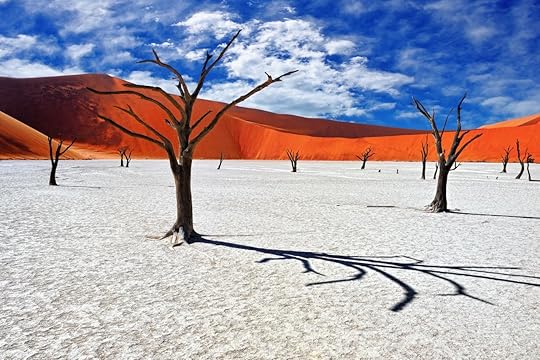
Photo: Oleg Znamenskiy/Shutterstock
The eerie vibe of Deadvlei, Namibia, is unlike anywhere else in the world. The area is populated by a stark palate of colors: white clay ground, petrified black camel thorn trees, red sand dunes surrounding the area, and a bright blue sky overhead. Deadvlei translates from Afrikaans as “dead marsh,” and the area indeed shows no signs of life. In fact, the sun-scorched trees themselves are believed to have died 600 to 700 years ago, but they don’t decompose due to the intense dryness of the area.
Since Deadvlei is located inside Namib-Naukluft Park, near the more well known salt pan of Sossusvlei, visitors can stop by, but the area requires at least a half-mile trek, so pack water for the hot walk to the trees.
2. Quttinirpaaq National Park, Canada

Photo: Ed Dods/Shutterstock
Baffin is an island in the high arctic territory of Nunavut in Canada that sidles alongside Greenland. The remote, mountainous landscape resembles the stark scenes on other planets. And it’s about as populated as other planets in our galaxy: Despite its 381,584 square miles, its population is just 62 people spread out among 21 private dwellings, according to the 2016 census.
Far away and isolated, Quttinirpaaq National Park on Baffin isn’t a place for the average traveler. You can visit the park on your own, but it’s only accessible by charter plane from Resolute Bay. Visiting is exclusively for those into glaciers, arctic expeditions, or polar bears. Only experienced trekkers should attempt to visit without being part of a tour.
3. White Desert, Egypt

Photo: Galyna Andrushko/Shutterstock
The bright white rocks of Egypt’s White Desert, the only visual elements of the area’s massive expanse of nothingness, come together with the stark, monochromatic landscape to give off distinct otherworldly vibes. The chalk rock formations come in various shades of white, and only white, making for a lunar setting unlike anywhere else — save for the actual moon. The White Desert is located in the Farafra depression, and visitors can head there on a tour, but it’s in a pretty remote location, hours from the nearest cities, so don’t venture out there unprepared.
4. Fly Geyser, Black Rock Desert, Nevada
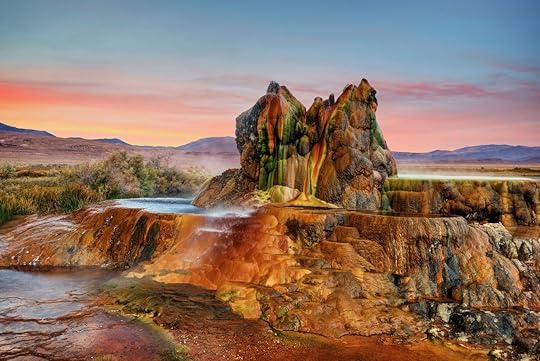
Photo: Lukas Bischoff Photograph/Shutterstock
Fly Geyser in Nevada’s Black Rock Desert definitely doesn’t look like anything you’ve seen before on Earth. A bizarre multi-colored structure, the Fly Geyser actually came into being entirely by accident: a failed well drilling project resulted in minerals creating the cones and pools you see today. The creepy green and red hues are due to algae growth.
Hopeful visitors can book a tour — in 2016, Burning Man Project purchased the land where Fly Geyser sits, and opened it to the public for guided nature walks by the Friends of Black Rock-High Rock.
5. Highlands, Iceland
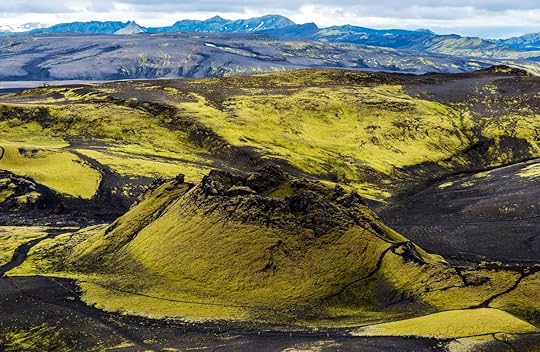
Photo: Sasha64f/Shutterstock
A step into Iceland’s Highlands region is an otherworldly experience, and no place is a better example of that than the black and green volcanic landscape of the Lakagigar craters. The series of striking geological formations resulted from an eruption in the 18th century. Some areas of the untouched landscape resemble the photos we have from Mars — and in fact, scientists use the Highlands region as a testing ground to better understand the geography of Mars for landing spacecrafts.
Visiting is an undertaking: You’ll need to know where you’re going and have a 4×4 vehicle to access the area.
6. The Danakil Depression, Ethiopia
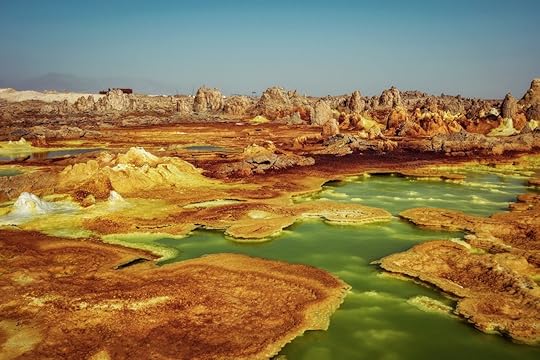
Photo: Lukas Bischoff Photograph/Shutterstock
Ethiopia’s Danakil Depression, in the Horn of Africa, formed as a result of Africa and Asia splitting apart over the ages of the earth. It sits at the junction of three tectonic plates, so it has seen its fair share of volcanic activity and geological changes. However, it’s the glowing, alien-like colors of the strange terrain that make it seem as if it’s located on another planet. It’s also one of the hottest places on Earth, so visiting does indeed feel like heading to a planetary neighbor that’s inhospitable toward human life. Interestingly enough, the famous fossil Lucy was found in this area, earning it the nickname the cradle of humanity. Visitors can check out the Danakil Depression on a tour with a guide.
7. Uyuni Salt Flats, Bolivia

Photo: Sara Winter/Shutterstock
Visiting the remote Uyuni salt flats in Bolivia — the largest in the world — is a bit like stepping into another world. A white expanse of salt expands out in all directions, as far as the eye can see. However, if you’re lucky, you might spot a pink flamingo in the otherwise barren landscape.
The nearby town of Uyuni — located a casual 11,995 feet above sea level — is a popular place to start for day tours or multi-day trips to the salt flats, though you can also set out from the town of Tupiza further south.
8. Wadi Rum, Jordan
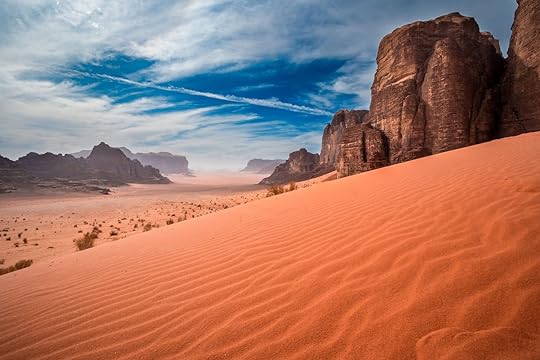
Photo: EyesTravelling/Shutterstock
Put a photo of Mars next to a photo of Wadi Rum in Jordan and most people would have a hard time telling which is which. Nicknamed Valley of the Moon, Wadi Rum is a rocky red valley that has served as a filming location for a wide variety of movies, especially science fiction flicks that need to depict scenes on Mars — think Red Planet, Prometheus, The Martian, and even a couple of movies from Star Wars franchise. The dry valley is located in southern Jordan and is cut from sandstone and granite rock.
The Zalabia Bedouin inhabit Wadi Rum and have formed it into an ecotourism attraction; visitors can come to rock climb, take a camel or horse safari, hike, or even camp under the stars (or in luxury “desert bubbles”).
9. Death Valley, California
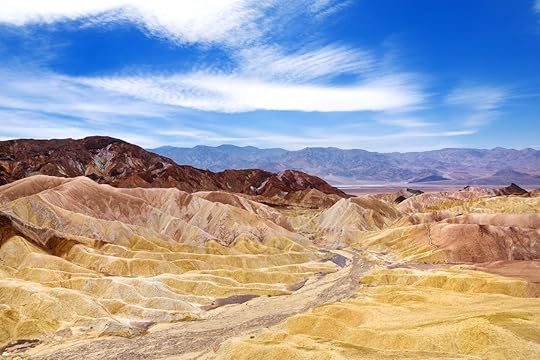
Photo: MNStudio/Shutterstock
A massive desert valley in eastern California, bordered by the Mojave Desert and the Great Basin Desert, Death Valley is one of the hottest places on Earth — perfect for those wanting to feel like they need to escape to another planet, one that’s uninhabitable.
The valley’s occasional dramatic wildflower blooms are what often make headlines, but this desert is worth a visit even when all the blossoms have withered. From hot springs to scenic lookouts to camps, there are various attractions across the 3,000-square-mile desert for visitors to check out. 

More like this: 9 beautiful deserts you’ve never heard of
The post 9 places that look like outer space — on Planet Earth appeared first on Matador Network.

The best luxury hotel bathrooms

When booking travel, I like to recall a quote from one of my favorite artists, Alicia Keys, just as a sort of guiding light to steer me in the direction of relaxation and to ensure I don’t end up in a dump next to the airport freeway. As Ms. Keys so eloquently put it:
“If I want to be alone, some place I can write, I can read, I can pray, I can cry, I can do whatever I want — I go to the bathroom.”
What puts the “luxury” in a luxury hotel room? For me, it’s definitely the bathroom. The latrine. The washroom. Whatever you want to call it, this is the most important thing to consider when booking a luxury hotel room. During waking hours, the bathroom is where hotel guests spend more than half of their in-room time. This is a statistic that, believe it or not, crosses gender lines. Whether it’s a lavish tub that overlooks the ocean or a treehouse shower in the jungle, hotel bathrooms influence where travelers rest their heads, whether they realize it or not. Few things about a hotel stay are harder to forget than a crappy bathroom, after all.
But rather than just browsing TripAdvisor photos to confirm a bathroom isn’t disgusting, you should choose your hotels around their bathroom offerings. When it comes down to final decision-making, it’s the right blend of design, amenities, ambiance, comfort, relaxation, and a bit of opulence that can make the difference between a good experience and a great one. Here are some of our favorite hotel bathrooms around the world that exemplify these qualities.
1. The Setai — Miami Beach, Florida
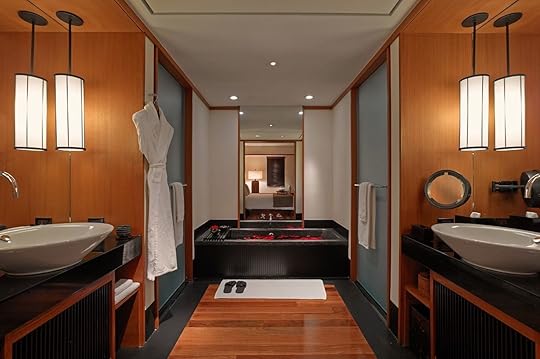
Photo: The Setai
There’s nothing worse than paying a lot of money for a hotel room, only to immediately walk in the door to a bathroom that’s so small the door hits the toilet. Space is a major issue, and one that luxury brands have capitalized on as their rooms generally aren’t as constrained by property lines or a need to squeeze as many cookie-cutter rooms into a building as possible. When two people can’t wash up at the same time, and there is no place for your vanity kit, your day is bound to start behind schedule.
At The Setai, just blocks from Miami Beach, you definitely won’t have to worry about size. Its design vision combines the Art Deco style and charm of Miami’s past while seamlessly blending Asian traditions of simplicity and grace, and in the bathroom, you might actually feel as though you’re in some ultra-modern version of a Japanese ryokan. The black granite bathtub is placed in the center of the hotel room, emphasizing light, natural materials, and open space, and essentially extends the bathroom experience throughout the entire room. Some studio suites are adorned with jade pieces, and louvered window coverings set a darker mood from the daylight.
The shower controls are an intricate European system, actually allowing for changes in water temperature that often feel so restricted in most hotels. I loved the fact that there are instructions on the sink for its use — no other place I’ve ever seen does that, and while it can seem a bit condescending at first glance, it can also be taken as a sign that the designers put a lot of thought into making this sink all it could be. At least they’re trying to be helpful. One is always left to their own devices to figure it out, sometimes with messy consequences, but not at The Setai. Bathroom products are Rosa, specifically formulated for the hotel.
2. Mandarin Oriental — Marrakech, Morocco

Photo: Mandarin Oriental
After a hectic day of sightseeing, the bathroom should feel like a step away from it all, and have enough amenities within it that you don’t have to keep tiptoeing in a towel back to the main room to grab something. The best example I’ve seen of this is the bathroom at the Mandarin Oriental in Marrakech, located just outside its old town with the Atlas Mountains as a backdrop. Using the Mandarin Oriental’s signature palette of cream and dark mahogany throughout, the large and elegant marble bathrooms have massive double sinks, a make-up area, and a large walk-in closet.
There’s also a lounge area in the restroom itself, because with the amenities on offer you might need to relax for a minute and plan your method of attack. The luxurious soaking tubs and steam showers are both big enough for two. Outside the wet zone, cloth laundry bags, sewing kits, fancy pens, comfy robes, daily newspapers, and fragrant products from a local paraben-free brand called Nectarome are available. It’s almost as though you have a market right in your bathroom. There’s body soap, shampoo, conditioner, and more — I brought some of the delicious scent home with me, along with the babouche slippers.
3. Le Royal Monceau Raffles Paris — Paris, France

Photo: Le Royal Monceau Raffles Paris
The bathroom puts us in our most vulnerable state. We’re naked and exposed. If the environment doesn’t feel private, protected, safe, and a true place of comfort, then really, what’s the point? You want to feel comfortable dropping the towel and taking a quick twirl, and in the center of Paris, near the Champs-Elysées, Le Royal Monceau Raffles Paris is a prime example of where you’ll have no qualms over doing so. It’s in the Art Deco style on the outside but the bathrooms are surrounded by reflective surfaces of steel and mirrors, works of art within themselves. With all of that silver, the freestanding white soaking tub is the focal point of the room. Maybe no other hotel has tried such a washroom because these gleaming bathrooms require a team of cleaners whose only job is to keep those mirrored surfaces spotless. As the bathroom frolicker, your only worry is honing those dance moves before you check-in, because you’re sure to see every off-balance move in full detail.
4. Hotel Grande Bretagne — Athens, Greece

Photo: Marriott
The Hotel Grande Bretagne, located in Athens’ city center, is a historical landmark that was originally a businessman’s private residence. It hosted the first modern Olympic organizers in 1896, and designers from Hirsch Bedner Associates renovated the hotel’s interiors and bathrooms to match the hotel’s history. The result is a setting that’s as Athens, and as over-the-top, as a bathroom could be. The Royal Suite is the owner’s personal paradise. The decadent bathroom is massive — a private sanctuary, for lack of a better term — with two walk-in closets, a massage table, and a gym.
A luxurious antique chandelier lights this rare blue marble bathroom, a not-so-subtle complement to the massage table and jetted tub which sits regally in the middle of the room surrounded by a chaise lounge, two ottomans, a double sink marble vanity, and an ornate full-length mirror. There’s also a glass-enclosed steam shower with three rain showerheads and a marble chaise in it so you can relax under the running water while watching the flat-screen TV. Molton Brown bath amenities round out the palatial experience. In all honesty, this hotel room doesn’t need a bed because it’ll take everything you have not fall asleep in the bathroom. 

More like this: The 9 sexiest outdoor hotel showers you should be using this summer
The post Why you should consider the bathroom above all else when booking a luxury hotel appeared first on Matador Network.

Matador Network's Blog
- Matador Network's profile
- 6 followers



